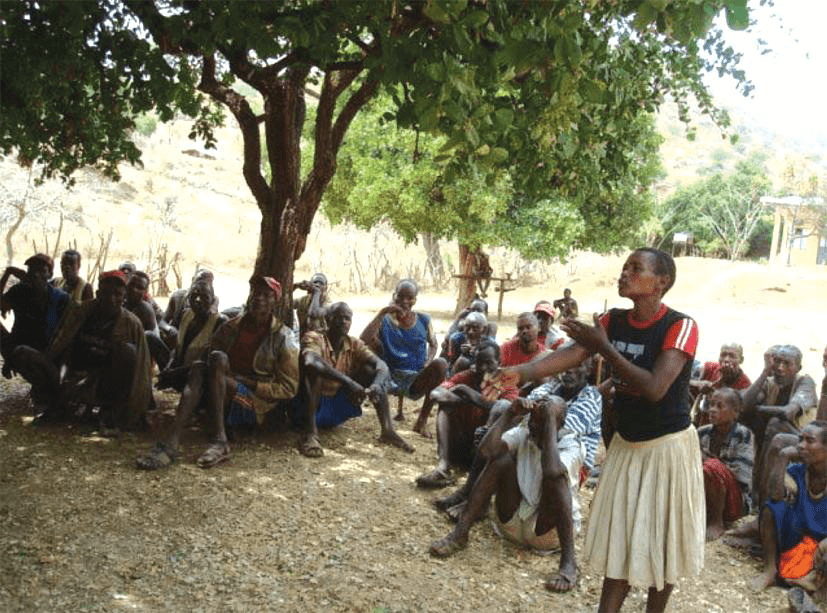Targets for health education
To achieve the above goals of health education as a HEW, you should select the appropriate target audience for each of your session. If you do not select appropriate target audience you will fail to achieve the targeted behavior change.
If you teach women above 49 years of contraceptive, do you think you will achieve your behaviour change goal? The answer is No. These women do not belong to the fertility age group.If you educate reproductive age women about this issue, you will be more effective.
All members of our communities can be the target of our health education according to their need.
However, as a HEW you should select appropriate topic of health education based on their need.
The method you use also should fit with your targets, so our health education targets are the following:
- Individuals such as clients of services, patients, healthy individuals.
- Groups (e.g. groups of students in a class, youth club, women's association).
- Community (e.g. people living in a village).
A. Individuals
All HEWs are expected to use health education to transfer health message to individuals within their community. Individuals are all health care service users such as women receiving antenatal care, school children, adolescents and young children. You will be able to deliver health education messages at both individual and at a household level.
For example there may be patients with diarrhoea who take some sort of treatment in your community. As a Health Extension Worker, you will be able to provide health education on personal hygiene, appropriate toilet utilisation and ORS preparation.
B. Groups
A group is a gathering of two or more people who have a common interest. It is possible to plan educational programs among these peoples. There are two types of group. The first is formal groups who have definite purpose and interests, group leaders, commitment to meet regularly and take action, and in which members know each other. E.g. Idir, women's association, farmers' cooperatives, youth club and so on. The second types of groups are informal groups are those who do not have defined rules they are governed by, no special leaders and usually concerned about themselves. E.g. patient in a clinic A health extension worker can plan health education sessions for both formal and informal groups.
The Value of Group Education is the Following:
- It provides support and encouragement. Group members will support each other in changing unhealthy behaviours and maintaining healthy attitudes.
- It permits sharing experiences and skills. People learn from each other. If one of the members has an experience of changing unhealthy behaviour, he will share his achievement with others. They will also share different skills.
- It makes possible to pool the resources of all members.
- You will access a large number of people at one place.
Some problems are difficult to solve by individuals alone, so a group approach to health education is necessary. So as a HEW, you should organise such groups and use them as an important way of communicating with your community.

C. Community
A Community can be described as a collection of people living in a defined geographical area and who have a feeling of belonging and share a common culture, beliefs, values and norms developed over a period of time. All health education activities should be based on good relationship with the community member. To build a good relationship the HEW should learn, understand and respect cultural norms and values in the community.
If a certain health problem became a major issue for people in your community, you should plan health education activities that address all segments of the community. It is one of the primary tasks of Health Extension Workers (e.g. a village community about the protection of spring water, dangers of FGM).